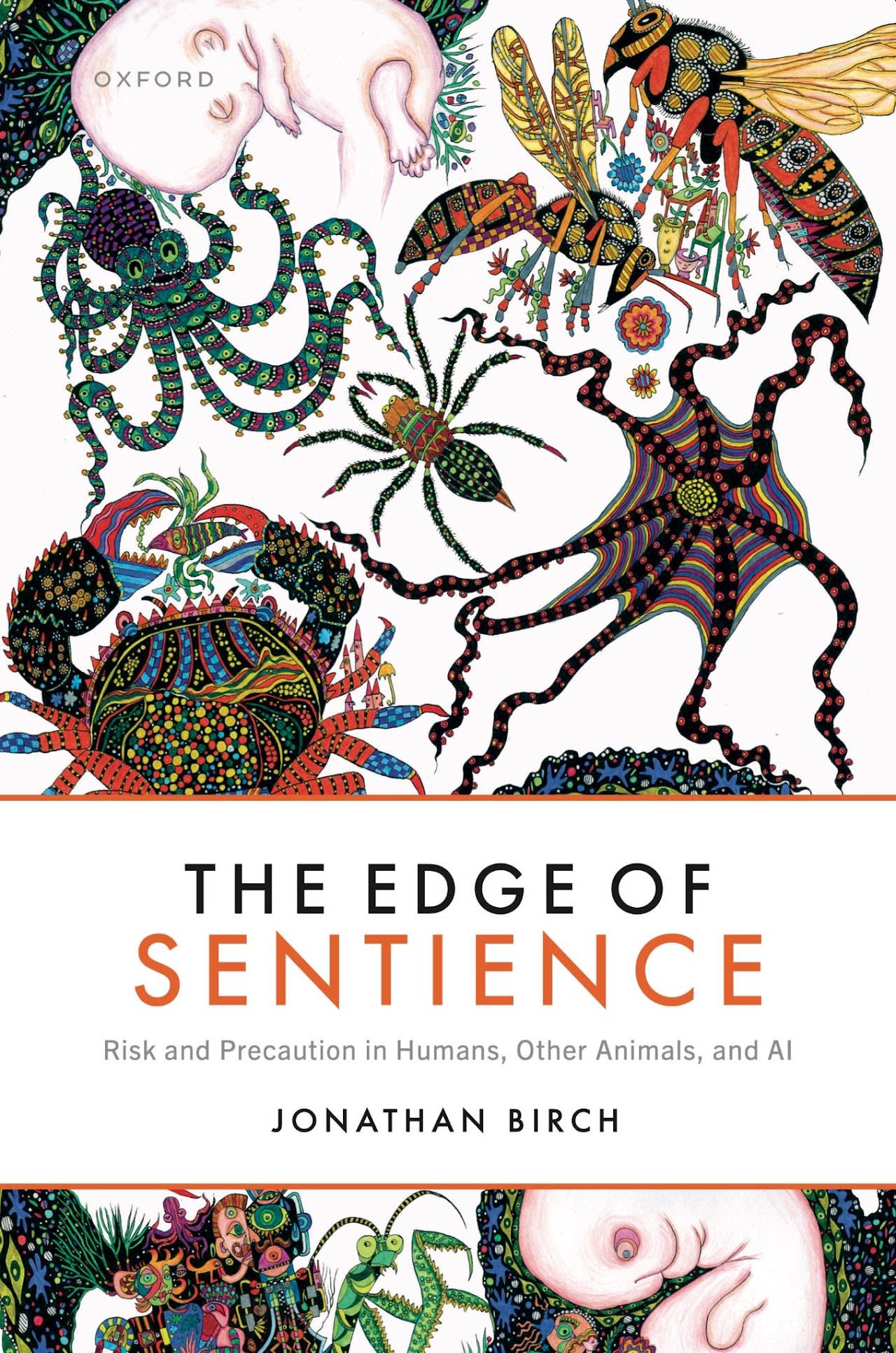The Edge of Sentience: Risk and Precaution in Humans, Other Animals, and AI
My new book The Edge of Sentience: Risk and Precaution in Humans, Other Animals, and AI is available online for free at https://academic.oup.com/book/57949. Please download it! Just click on PDF to get a PDF of the whole book. Individual chapters are also available as PDFs—just click on whichever chapters you want. The book is completely free to everyone and I’m grateful for all shares and forwards.
The print book will be released on 15 August in the UK and at some later time in the US, so please consider pre-ordering it. If you pre-order directly from the OUP website, you can get 30% off by using the code AAFLYG6. With the code, it’s £21/$28 (and they can deliver to other countries, as I understand it).
Here is an abstract:
Can octopuses feel pain and pleasure? What about crabs, shrimps, insects, or spiders? How do we tell whether a person unresponsive after severe brain injury might be suffering? When does a fetus in the womb start to have conscious experiences? Could there even be rudimentary feelings in miniature models of the human brain, grown from human stem cells? And what about AI? These are questions about the edge of sentience, and they are subject to enormous, disorienting uncertainty. The stakes are immense, and neglecting the risks can have terrible costs. We need to err on the side of caution, yet it’s often far from clear what ‘erring on the side of caution’ should mean in practice. When are we going too far? When are we not doing enough? The Edge of Sentience presents a comprehensive precautionary framework designed to help us reach ethically sound, evidence-based decisions despite our uncertainty.
On a more personal note: in many books about consciousness/sentience, the importance of the questions for policy, ethics and law is mentioned at the beginning (as motivation) then put to one side. Four years ago I set out to write a book that would be “inside out”: it would put the practical challenges at the centre and try to show how science and philosophy can be marshalled to help with them. This is that book. It’s in the nature of the project that the release is just the beginning. The book is not a digest of past results but a book of proposals about the future − 26 proposals, 26 ways we could do better to manage risk—and it will succeed to the extent that its proposals are taken seriously and discussed. So, I’m very grateful indeed to anyone who reads the book in that spirit and gives the proposals some thought.

Any possibility for an ePub/Mobi (for reading on ereader etc)
Thanks for writing this!
Is there/ will there be an audiobook version?
There is not—but Aaron Bergman has kindly produced a free audiobook using text-to-speech software: https://open.spotify.com/show/7x1NPYRn55K3nZz855tB29?si=e70f01cec64d4e86…
It won’t be perfect but Aaron has included a Google Form in the description where people can report errors.
Thanks Jonathan, and thanks so much @Aaron Bergman! #shrimpact
Also available on Apple podcasts: https://podcasts.apple.com/.../the-edge-of.../id1761877270